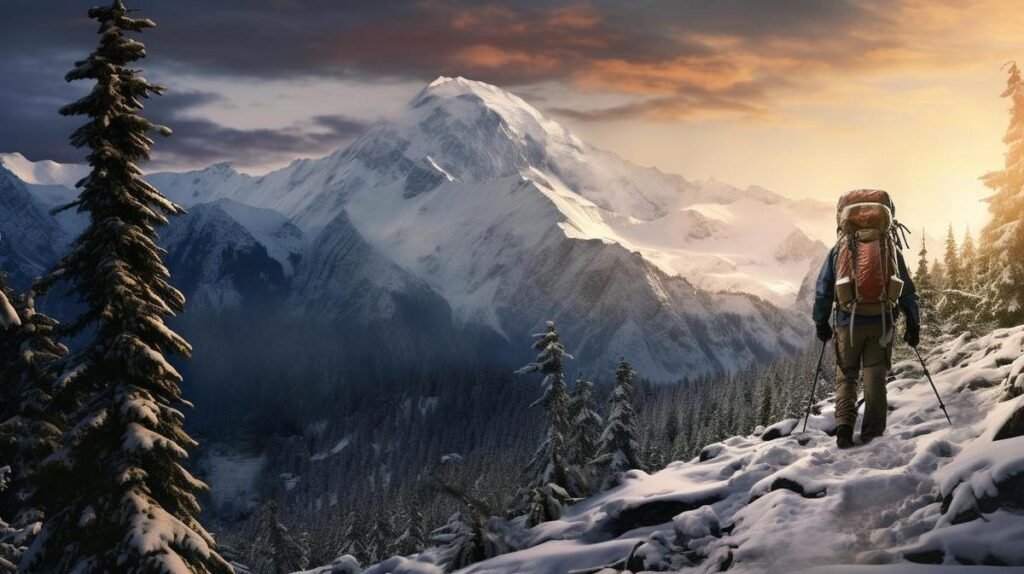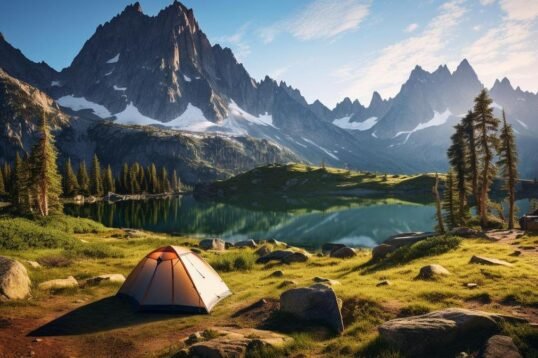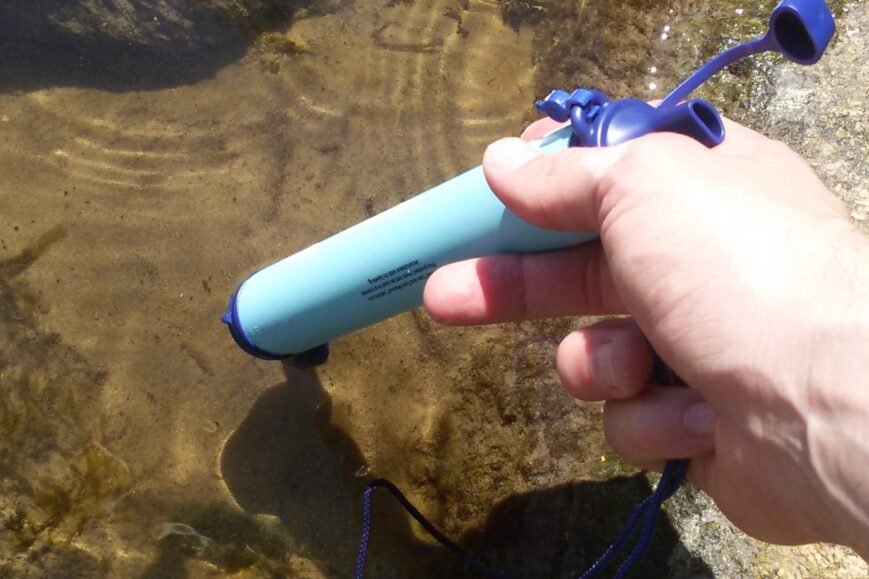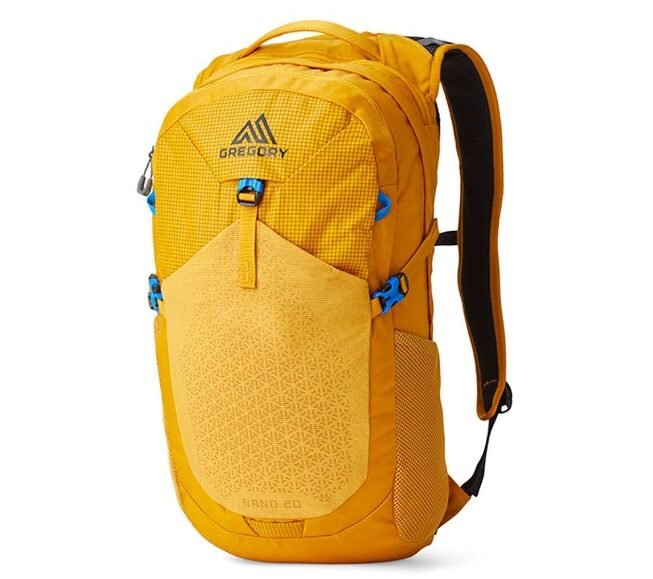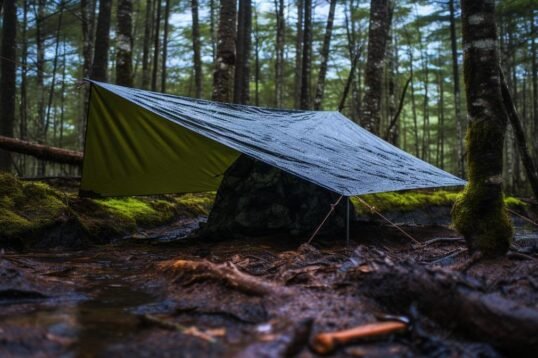- Winter hiking essentials: warm layers, signaling devices (whistles, mirrors), navigation tools (map and compass), and modified first aid kit (with thermal blankets, and hand warmers).
- Preparation includes checking trails and weather, creating an itinerary, and getting physically fit.
- Prevent hypothermia by dressing in layers, staying dry, and eating high-calorie foods; prevent frostbite by keeping skin covered and warm.
- Navigation: use a map, compass, and GPS (with spare batteries), be aware of reduced visibility from winter darkness, and inform others of your plan.
- Ice hiking: wear the right footwear (with crampons) and walk carefully.
- Hydration/nutrition: drink regularly (using insulated flasks) and eat high-calorie snacks that won’t freeze.
- Layering clothing: moisture-wicking base, insulating middle, wind-blocking outer layer.
- Wildlife: maintain a distance and understand animal tracks; avalanches: know the risks and survival techniques.
- Signaling in emergencies: visual (flares) and audio (whistles) devices, consider rescue insurance.
- Advanced survival skills: fire-starting, shelter building, maintaining body heat, staying active, and consuming high-energy food and water.
Are you ready to brave the chill and conquer the trails this winter? Before you step into the snowy wonderland, gear up with non-negotiable winter hiking essentials! Learn to layer like a pro, signal for help in emergencies, and navigate through icy landscapes. Here’s your guide to staying safe and enjoying every frosty step. Let’s get you prepped for an adventure where only the essentials make the cut!
What Should You Include in Your Winter Hiking Safety Essentials?
What are the non-negotiable items for winter hiking safety?
The must-haves are warm layers, signaling devices, navigational tools, and a winter-ready first aid kit.
Can beginners learn about winter hiking safety essentials?
Yes, beginners can learn about winter hiking safety essentials with proper research and guidance.
Learning to dress in layers is key. Start with a base layer that wicks sweat away. Add an insulation layer to keep warmth in. Top it off with a shell to block wind and wet. Materials like wool or synthetics work best as they keep you warm even when damp.
Always carry a signaling device. This can be a whistle or a mirror, which you use to alert rescuers if you get lost.
Bring navigational tools. A map and a compass are must-haves because GPS can fail in cold or remote areas.
Change your first aid kit for winter. Add items like thermal blankets and hand warmers to deal with the cold. Don’t forget about extra meds and bandages as well.
Be wise and well-equipped. It can make all the difference when braving the cold, wild outdoors.
How Do You Prepare for a Winter Hike?
Before a winter hike, you must check the trail and weather. Make sure to make an itinerary. You need to be fit and strong to hike in the cold.
To answer “What should be done before embarking on a winter hike?” — know the trail, look up the weather, plan your route, and train your body. A winter hiking checklist should include gear for warmth, safety, and navigation.
For a solid start, study the path you’ll take. Trail conditions can change fast in winter. Ice and snow may cover the ground. This makes it hard to walk. Knowing this, you can bring the right gear, like snowshoes or crampons.
Always keep an eye on the weather forecasts. This can help you dodge bad storms. When the sky turns mean, it’s time to pack extra warm gear or change your plans.
Your trip plan — or itinerary — is key. You should know how long you will hike each day. Let someone know this plan. If trouble hits, they will know where to look for you.
And don’t forget your body needs to be ready. Winter hiking is tough. Start getting fit now with walks and strength training. This way your muscles can handle the extra work of hiking in the snow.
So gear up, plan well, and get fit! This way you stand the best chance against Old Man Winter’s tricks.
What Techniques Can Prevent Hypothermia and Frostbite?
The best practices to prevent hypothermia include dressing warmly, staying dry, and eating high-energy foods. For frostbite, keep the skin covered and warm.
Now, let’s jump into the details. Hypothermia prevention is critical. It happens when your body loses heat faster than it can make it. This can make your heart and nervous system shut down. To stop this, layer up. Start with a moist-wicking fabric close to your skin. Then add an insulating layer, like fleece, to trap warmth. The outer layer should block wind and wetness. This could be a waterproof, breathable jacket.
For frostbite first aid, you need to act fast if your skin looks white or numb. Gently warm the area in warm water, not hot, for up to 30 minutes. Don’t rub the skin or walk on frostbitten feet, if that’s the case. After warming, wrap the area in a clean cloth for protection. If frostbite seems bad, get to a doctor as soon as possible.
Thermal regulation techniques are key to staying safe. Move around to keep blood flowing but don’t sweat too much, as it can make you cold later. Drink plenty of fluids to stay hydrated. This might seem odd in the cold, but it’s vital. Eat energy-rich foods like nuts and energy bars. These foods help your body make heat.
Remember, in cold weather, drink water and munch on snacks often. Keep your energy up so you stay warm. Use these tips to stay toastier out in the wild winter!
What Are the Best Navigation Strategies in Winter Conditions?
Navigation aids you should rely on during a winter hike include a map and compass, as well as GPS devices. Winter darkness affects trail navigation by reducing visibility, which makes it hard to stay on track.
Let’s break that down. Always carry a map and compass. Know how to use them in case your tech fails. GPS devices are good but not perfect. They need power and a signal to work. Learn the land before you go. Marks on trees or big rocks can help when trails vanish under snow.
Darkness comes early in winter. This means less time to hike in daylight. Good lights can help you see the trail in the dark. Still, it’s best to plan hikes to finish before night. Or know the trail well if you must hike in dark hours.
Remember, tech can break or lose power in the cold. Carry spare batteries to stay safe. Always let someone know your hike plan too. This way, they can help if you get lost. Be ready for whiteouts. These are snow storms you can’t see through. If caught in one, find shelter. Wait until you can see well again before moving on.
Using the right tools and knowing your limits keeps you safe. Stay on top trails and enjoy winter wonders with care.
What Are the Necessary Ice Hiking Techniques?
How can one safely hike over ice? Walk flat-footed and use gear that grips. To safely hike over ice, you need the right footwear and careful steps. It’s like you’ve got a secret power against slips. Ice hiking techniques include knowing how to walk and using tools for extra grip. A crampon usage guide helps a lot.
What is the proper use of crampons and other ice hiking gear? Attach them snugly and step with care. Crampons need to fit your boots just right. You strap or clip them on so they won’t slip off. Once they’re on, you take slow, steady steps. Slip-resistant footwear for ice helps, too. Boots with deep grooves bite into the ice. They keep you standing when the ground tries to trip you up.
To make sure you stay safe, always check if the ice is solid enough to walk on. For crampons, follow a step-by-step guide. It’s super important to get them on right. For footwear, choose boots made for ice. Look for ones with great grip and that keep your feet warm. Remember, safe ice hiking is all about being steady and prepared.
How Can You Stay Hydrated and Nourished During Winter Hikes?
What are the risks and solutions for hydration in cold weather? In cold weather, you don’t feel as thirsty. But you still need water to keep warm and energized. The answer is to drink often, even if you’re not thirsty. Use an insulated flask to keep your water from freezing.
What food should be consumed on winter hikes? Choose high-calorie snacks. They give you energy and help your body stay warm. Foods that won’t freeze are best, like nuts or energy bars.
Hydration is key when you hike in the cold. Your body loses water through sweat and breath. It can trick you because you might not feel like drinking. However not drinking enough can lead to dehydration. That’s why it’s important to take breaks and sip water, even when not thirsty.
Insulating your water bottles or using containers designed for winter can keep your water in liquid form. Pack hot drinks in a thermos, and take sips regularly to add warmth and energy to your body.
Now, let’s talk eats. What you scoff down during your hike can make or break your day. Winter hiking food ideas circle around high-calorie snacks. We need these calories to fuel our bodies in the cold. Think nuts, seeds, cheese, and chocolate. They pack a lot of energy and are less likely to freeze.
Planning meals? Go for simple-to-make and eat foods. Good choices could be peanut butter sandwiches or pasta that can stay edible even in cold temps. Remember, food can stiffen or freeze. So, pack items that you can eat without much fuss, even when cold.
To keep your food from freezing, store it close to your body. Body heat helps. Also, choose packaging that is easy to open with gloves on. You don’t want to struggle with tiny zips in the cold.
Hydration and proper food are non-negotiable. They keep you going strong on winter trails. Remember, cold weather hydration and munching on those high-calorie snacks could save your hike and your health. Drink up, chow down, and hit the snowy trails with confidence.
What Clothing Layers Are Essential for Winter Hiking?
How should hikers layer for winter conditions? In short: with care. Use moisture-wicking base layers to keep sweat off your skin. Pick wool or synthetic materials. They work best. Add insulation layers to trap body heat. Use fleece or goose down for this. Your wind chill protection layer matters too. It keeps biting winds at bay.
Base layers work like a second skin. They should pull sweat away from your body. This keeps you dry and warm. Materials like polyester or merino wool are top-notch choices for base layers. Why? Because they’re super at managing moisture and keeping you toasty.
Now, let’s talk about the middle layer. It’s all about trapping air to keep you warm. For milder days, a light fleece works. When the mercury drops, you’ll want heavier insulation. Think puffy, insulated jackets.
Wind chill can turn a hike into a risky business. That’s where your outermost layer comes in. It must block wind and let sweat escape. This way, you keep the chill out without getting damp from inside. Jackets with vents are great. They offer an extra way to control your body’s warmth.
Remember this: Dressing right is your first step to a safe winter hike.
How to Deal with Wildlife and Stay Safe in the Snow?
The best way to deal with wildlife in winter is to watch from afar. Give animals space. To avoid avalanches, look for signs and follow trails. Animal tracks in the snow tell you what’s nearby.
Safety tips for common wildlife encounters in snowy regions
Always watch wildlife from a safe spot. Do not try to feed them. Loud noises can help scare them away if they get too close. Know which animals live in your hiking area. Some might be sleeping in winter, but others are still out.
Basic avalanche safety measures every hiker should know
Avalanches are serious. Learn about them before your hike. Check local reports for risk levels. Hiking in groups is safer. Avoid risky areas like steep slopes. If caught in an avalanche, try to swim to stay on top.
How to identify and interpret animal tracks in the snow
Animal tracks in snow share tales of who passed by. Look for clear, fresh tracks to see recent activity. Deer tracks have two parts and are pointed. Bear paw prints are big with claw marks. If you see many tracks together, it might be a group, and you should be careful. Remember, some tracks lead to food, but it’s not ours to take. Always keep your own safety in mind.
What Emergency Signaling Should You Carry in Snow?
What emergency signaling should you carry in the snow? Always have both visual and audio signaling devices. Flares and whistles are key.
Snow hides you well. If you get stuck, you need a strong signal. A flare can be seen from afar. It tells people where you are. The bright light stands out against the snow. But flares are not toys. Only use them in real trouble. They show you need help fast.
Carry a whistle, too. Sound travels far in quiet snow. Three short blows mean you’re in danger. Keep blasting, someone should hear.
Is it worth getting rescue insurance before a winter hike? Yes, it’s smart. Rescue insurance can save your money and life. If a rescue team must come, the cost is high. Insurance pays for that. Always hope you don’t use it, but be glad if you do.
Rescue teams work hard in bad snow. They help injured or lost hikers. When you have to call for help, you won’t have to worry about money. Your focus stays on staying safe. That peace of mind is worth the fee.
What Advanced Winter Survival Skills Should a Hiker Know?
The key survival skills for winter hiking are fire-starting, shelter-building, and maintaining body heat. To stay warm during activities in freezing temperatures, keep moving. This helps your body make its own heat.
Fire-starting in wet conditions can be tough. But it’s key to warm up and dry clothes. You’ll need waterproof matches or a lighter, and dry kindling. In the snow, build a platform with logs. This stops the fire from sinking.
For shelter, dig into the snow. A snow cave keeps you warm and out of the wind. Use a tarp and branches to make a quick lean-to. Always block the wind and stay dry.
Building stamina for winter hikes means being active. Start with short hikes and go longer as you get stronger. Work on your legs and core. It makes hikes easier and keeps you warm. Always eat high-energy foods and drink water. Even if it’s cold, your body needs it to make heat and energy.
In summary, master fire-making, build a strong shelter, stay active, eat well, and keep hydrated. These skills will keep you safe and warm on winter trails.
Conclusion
In this post, we’ve dug deep into what you need for safe winter hikes. Layer your clothes, carry a map, compass, and GPS for those tricky trails. Know how to spot frostbite and keep warm. Got crampons? Learn to use them right, and choose boots that grip the ice. Pack foods that give you power and won’t turn into ice blocks. Keep water handy so it doesn’t freeze. Meet wildlife? Stay calm and know your safety steps. And don’t forget, signal devices and rescue insurance—they’re big deals. Out there, with the right skills and gear, you’re set to enjoy and conquer the cold!
![]()

